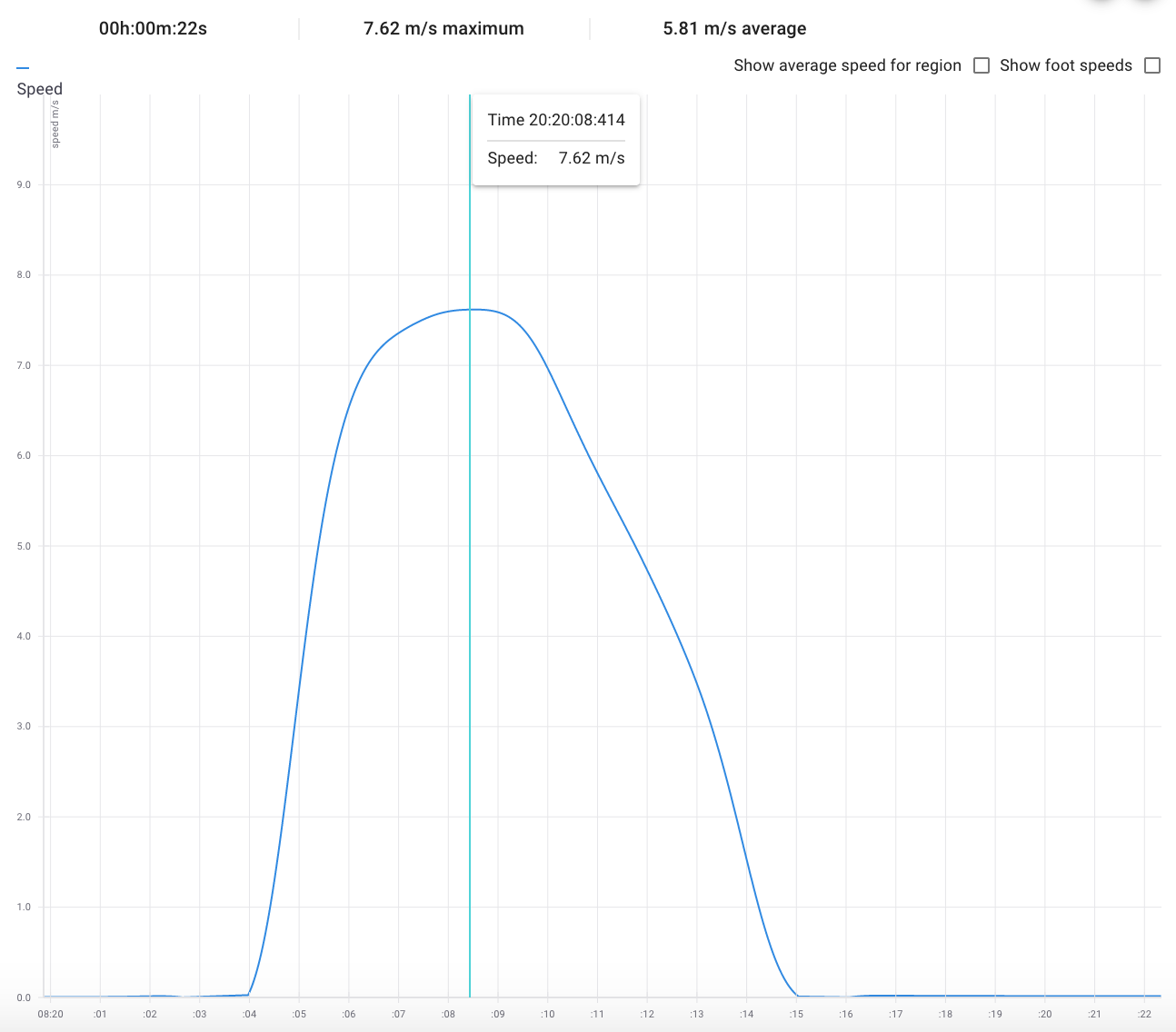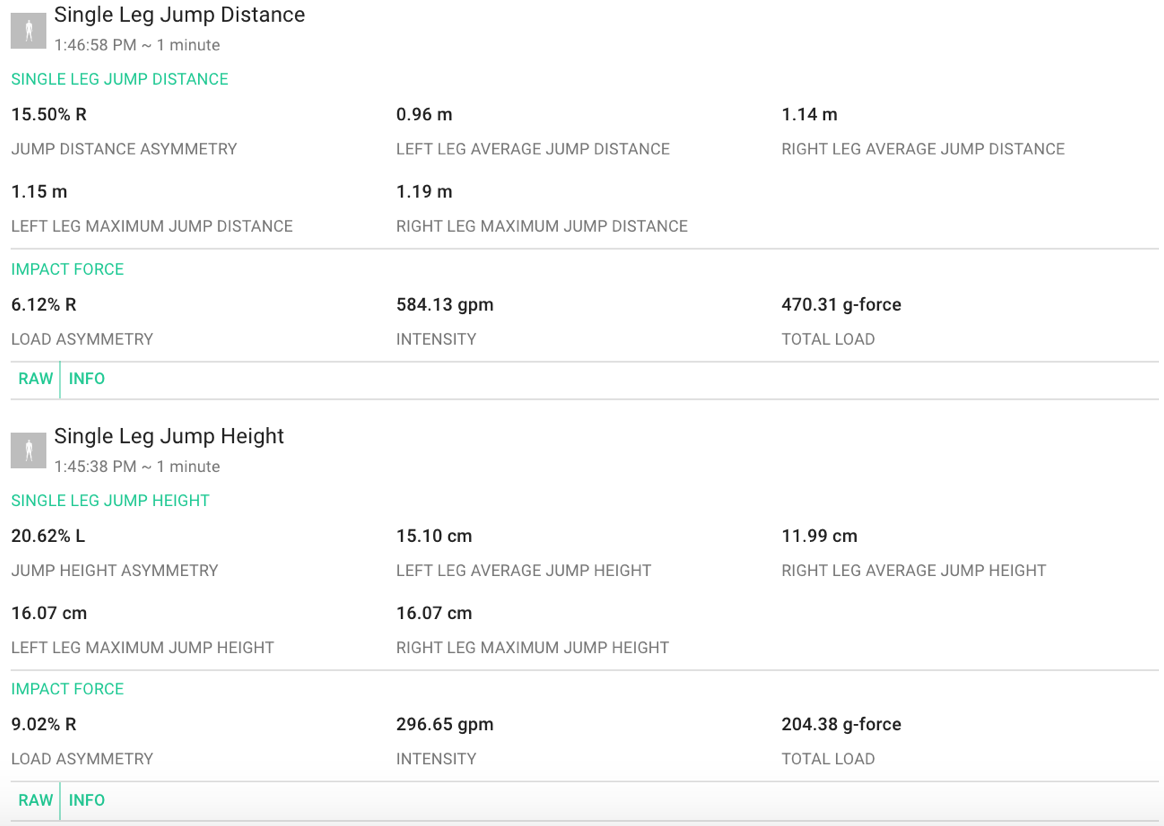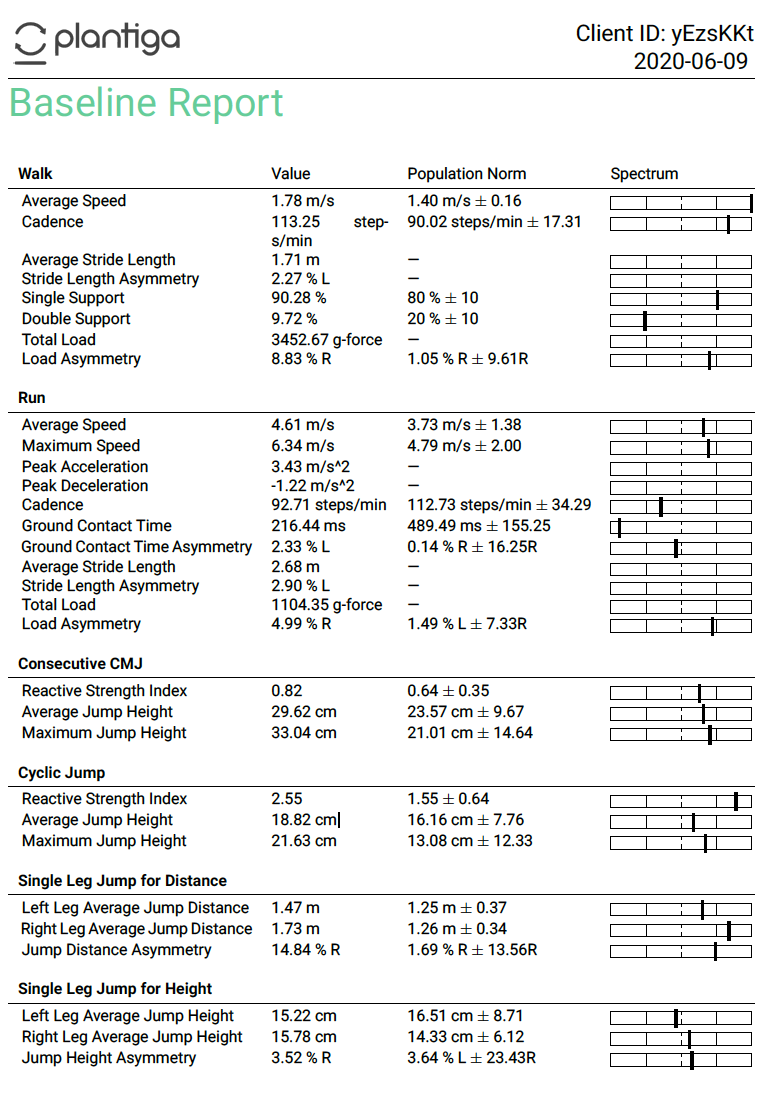Baseline fitness testing is an essential part of any seasonal assessment in sport. Not only does it function to measure and evaluate the physical fitness of an athlete, it also provides insights into their risk for injury prior to and during the season. Recommended areas of testing include aerobic capacity, speed, acceleration, agility, strength/power, and reactive strength (Turner et al. 2011). While laboratory testing is the gold standard for fitness assessment and injury risk assessment, these tests are expensive and inaccessible for regular use by coaches and players. Therefore, standardized, on-field, pre-season assessments have been developed to easily test each of these athletic attributes, such as the SPARQ testing protocol developed by Nike. The soccer specific SPARQ testing includes 5 core tests:
- Body mass (used with the vertical jump to calculate leg power)
- Standing vertical jump (a measure of leg explosive power)
- 20-meter sprint (a measure of acceleration and max speed)
- Arrowhead Agility (a measure of the ability to change directions)
- Yo-Yo Intermittent Recovery (a test of aerobic capacity).
Plantiga’s instrumented insoles bridge the gap between gold-standard lab grade testing and accessible, easy to implement, on-field testing.
With Plantiga’s 5 core activities (Walk, Sprint, Consecutive Countermovement Jump, Cyclic Jump, and Single leg Jumps), the platform can measure each core athletic attribute in addition to important injury risk metrics, typically inaccessible through standard on-field testing.
Outlined below is how each of Plantiga’s core activities meet the criteria for standard fitness testing, along with injury risk metrics that improve coaches’ decision making and reduce injury:
- Walk Test - A walk test provides information regarding walking speed along with spatiotemporal gait parameters. As noted in a 2013 study by White and colleagues, gait asymmetries persist as long as 1 year after ACL reconstruction. These asymmetries can be revealed through a walk test, which analyzes the parameters in which each limb moves. This has important implications as girls’ soccer has the highest ACL injury rate of any sport, with boys’ soccer being second for male sport, following football (Joseph et al. 2013). The ability to screen and identify at-risk players would help reduce injury prevalence and improve coaching staff decision making.
- Run/Sprint Test - Straight-line sprinting can be broken down into 3 phases: acceleration, attainment of maximal speed, and maintenance of maximal speed. Through either a 20-meter sprint or 40-meter sprint, Plantiga can quantify these three phases of a sprint. Shown below is a graphical representation of a sprint, which is provided alongside values of peak m/s², and peak m/s. In addition to classic measures of sprint testing, Plantiga provides metrics such as cadence, ground contact time, flight time, stride length, etc… all of which provide important information surrounding injury risk and running economy. For example, faster cadences result in reductions of load and tibial shock, lowering the prevalence of plantar fasciopathy, patellofemoral pain, achilles tendinopathy, and tibial stress fractures (Adams et al. 2018).

- Consecutive Countermovement Jump (CCMJ) Test - This test primarily targets the quadriceps complex, giving players and coaches two main measures: maximum jump height (a measure of power) and RSI score (a measure of reactive strength and agility). Increased CCMJ height is correlated to 1RM squat ability (Turner et al. 2011). Higher reactive strength indicates higher jump height, lower ground contact time at all running speeds, higher rate of force development, and greater ability to change direction (Turner et al. 2011). Each of these attributes contributes to the movement economy of an athlete and will in-turn help players maintain energy throughout games.
- Cyclic Jump Test - This test targets the gastroc-soleus complex, and like the CCMJ test, it gives measures of maximum jump height and reactive strength/agility. This test consists of 20 consecutive hops about the ankle and is especially relevant to running-based sports in which repeated, change-of-direction, and fast rate of force development are key.
- Single Leg Jumps - Single Leg Jumps (SLJ) are a type of plyometric exercise that help to quantify muscular asymmetries as they assess each leg independently of the other. In a study conducted on male and female collegiate athletes, it was noted that asymmetries above 10% between limbs increased risk of injury. Specifically, female athletes with greater than 10% asymmetry for single leg jump distance had a 4-fold increase for foot or ankle injury.(Brumitt et al. 2013).
- Single Leg Jump for Distance (SLJ-D) - Primarily assesses musculature surrounding the ankle and hip (Robertson & Flemming, 1987).
- Single Leg Jump for Height (SLJ-H) - Primarily assesses musculature surrounding the knee (Robertson & Flemming, 1987).

Plantiga performed these fitness/injury risk assessments on a premier soccer club in North Vancouver, British Columbia, consisting of 204 players. Outlined below is the timeline of testing requirements:
- Total club players = 204
- Players tested per day = 68
- Players tested within a group = 8-9 (i.e. half a team)
- Groups tested per day = ~8 (i.e. four teams)
- Testing time = ~15-20 minutes
- Time between testing = ~5-7 minutes
- Total time per day = 3 hours
- Total testing days = 3
- Time to get through an entire soccer club = ~9 hours spread over a 3-day period
In conclusion, Plantiga’s instrumented insoles allow coaches to easily access state-of-the-art fitness and injury risk assessments right from their own field. The ability to assess the core measures of fitness along with injury risk metrics, unobtainable with standard fitness testing services, makes Plantiga the ideal platform for pre-season baseline testing. In addition to the quality of assessment, Plantiga testing is time efficient, only taking 9 hours to get through an entire club. It should be noted that for the assessments outlined above, a roughly 50m x 30m area (i.e. the semi-circle area behind the goal on a field with a track) was used to conduct all testing protocols. If more space and an additional tester had been available, more players could have been simultaneously tested, thereby reducing the total time of testing. Plantiga could provide baseline and follow-up testing for an entire league, providing the insights needed for a team to perform at its best.
Below is a sample of the Plantiga Baseline Report:

.png?height=120&name=Plantiga%20lockup%20black%20(1).png)